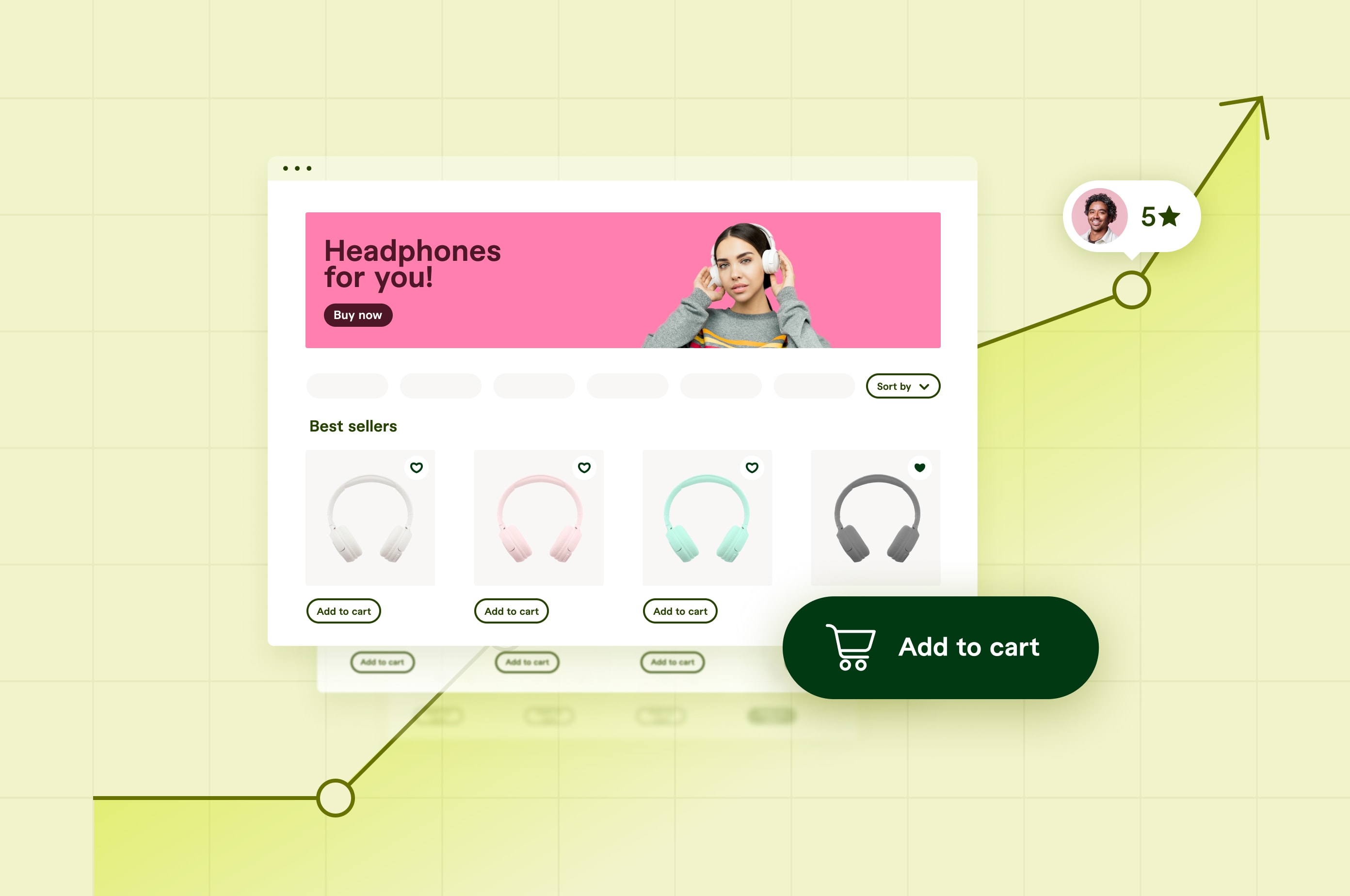How to Start a Dropshipping Business: Step By Step
Our step-by-step guide will help you start a profitable dropshipping business. Discover key strategies, tools, and tips for e-commerce success.
 December 10, 2024
December 10, 2024 8 minute reading
8 minute reading
If you’ve ever dreamed of running your online store without the hassle of keeping inventory, you’re in the right place.
Today, we will introduce you to dropshipping, the art of having a store where you can sell products without touching them.
We’ll dive into what dropshipping is all about and how it works and discuss essential tips on how to start dropshipping business successfully. So, grab a cup of coffee, and let’s explore this exciting opportunity.
What Is Dropshipping?
Before disclosing how to start dropshipping, you must know that, at its core, dropshipping is a retail fulfillment method that allows you to sell products without holding any inventory. Instead of buying products upfront, you simply list items for sale on our online store. When a customer purchases, you order the item from a third-party supplier who ships it directly to the customer’s doorstep. It means you can focus on marketing and customer service while the supplier handles the heavy lifting.
The dropshipping industry is booming. In fact, it’s set to reach USD 1,253.79 billion by 2030. This growth is driven by the rise of e-commerce and the increasing demand for convenience. More and more people prefer shopping online, which opens up incredible opportunities for dropshippers to tap into a vast market without breaking the bank.
Is It Legal?
Absolutely. Dropshipping is legal in most countries as long as you follow the rules and regulations of your business and the suppliers you work with. You must do your homework and comply with local laws and guidelines from platforms you sell on, like Shopify or eBay. But don’t worry; you can navigate these waters smoothly with some research.
Pros And Cons
Let’s take a look at some of the pros and cons of dropshipping:
Pros:
Low Startup Costs: You don’t need much money to get started. Since you don’t have to buy inventory upfront, you can launch your store with minimal investment.
Flexibility: You can run your dropshipping business from anywhere—whether at home, in a coffee shop, or while traveling. Dropshipping is flexible; you only need your laptop and an internet connection.
Wide Product Selection: You can offer a diverse range of products without risking being stuck with unsold inventory. If something isn't selling, you can easily switch it out for something new.
Scalability: As your business grows, you can easily add new products and suppliers without worrying about logistics.
Less Stress: With suppliers handling shipping and inventory management, you can focus on what you love—growing your business and connecting with customers.
Cons:
Lower Profit Margins: Since you rely on suppliers to fulfill orders, your profit margins might be slimmer than traditional retail. But don’t worry; you can explore strategies to optimize your pricing and increase your earnings.
Inventory Issues: Sometimes, your suppliers might run out of stock, leading to delays in fulfilling orders. You can tackle this by maintaining strong communication with your suppliers and having backup options.
Quality Control: Since you don’t see the products before they reach your customers, there’s a chance that the quality might not meet expectations. To address this, you can choose reliable suppliers with good reviews and do your research before listing products.
Considering these pros and cons, you can make informed decisions and set yourself up for success as you learn how to start dropshipping. Remember, you can overcome the challenges with the right tools and strategies, which we’ll explore later in this article.
How To Start A Dropshipping Business: Step By Step Guide
Starting a dropshipping business might sound daunting, but it can be a fun and rewarding journey. Whether you’re just dipping your toes into the e-commerce business waters or looking to splash, this step-by-step guide will set you on the right path to building a successful venture.
Business Finances & Requirements
It's essential to get your business finances in order before diving into the exciting world of dropshipping. Start by determining your budget, which will help you decide how much you can spend on tools, marketing, and other expenses. Remember, you don’t need a massive sum to start, but having a clear financial plan can make all the difference.
Next, ensure you meet legal requirements for starting a business in your area. This step may involve registering your business name, obtaining necessary licenses, or understanding tax obligations. It may seem overwhelming, but taking these steps will give you a solid foundation upon which to build.
Conduct Product Research
Once your finances are in check, it’s time for one of the most exciting steps: conducting product research! Here is where you’ll discover what products are trending and what your potential customers are looking for as you figure out how to start dropshipping. The key here is to find items that interest you and are in demand in the market.
There are plenty of tools and platforms and product research services that can make the product research process a breeze. With insights into trending products, sales data, and competition analysis, you'll have all the information you need. These tools and professionals can help you decide which products to offer in your store, immediately setting you up for success.
Choose Reliable Dropshipping Suppliers

AutoDS
Selecting the right suppliers is a crucial step in your dropshipping journey. You want partners who deliver quality products and ensure that items arrive on time. Imagine a customer excitedly waiting for their new gadget, only to discover it’s delayed. That’s a situation you want to avoid.
When searching for reliable suppliers, take your time to research and communicate with potential partners. Look for suppliers with positive reviews and a solid reputation in the industry. Consider their product quality, shipping times, and customer service. A good practice is to order a sample product to assess its quality firsthand before committing to a supplier.
Now, if you're looking for a helping hand in this process, consider tapping into AutoDS's network of vetted suppliers. They connect you with trustworthy partners with a proven track record of delivering quality products on time. This way, you can feel confident knowing you’re working with suppliers who can support your business goals and help you grow your dropshipping venture smoothly.
Select A Selling Channel
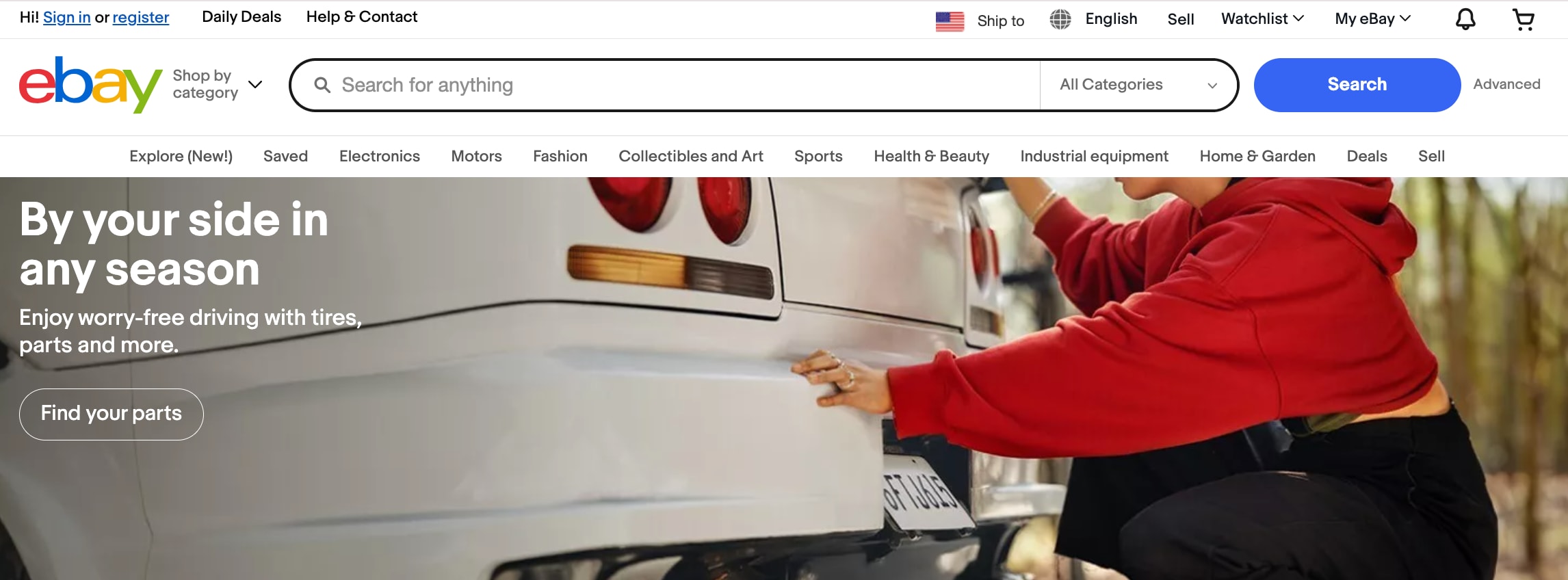
Ebay
Now that you have your products and suppliers sorted, it’s time to choose where to sell your items. You generally have two options: marketplaces and online stores. Marketplaces like eBay or Amazon can give you instant access to a large customer base but may come with fees and restrictions. On the other hand, having your own online store on platforms like Shopify provides more control over branding and customer experience.
Think about your target audience and where they’re most likely to shop. Setting up your online store might be the way to go if you're looking for more flexibility and branding opportunities. Whichever path you choose, ensure it aligns with your business goals and offers a seamless shopping experience for your customers.
Create A Store
Now, it’s time to create a digital storefront where you’ll showcase your brand and products, so it’s essential to get it right. Start by choosing a platform that suits your needs. You can find website development services for a unique site or use a specialized platform. Shopify is a popular option because it’s user-friendly and offers various templates to make your store look professional.
When learning how to start dropshipping, consider your target audience. What will appeal to them? Use colors, fonts, and images that reflect your brand's personality. Ensure your layout is intuitive, allowing customers to navigate your products easily. A well-organized store will keep visitors engaged and encourage them to explore more.
Product listings are another key aspect. Each product should have high-quality images and detailed descriptions. Highlight the benefits and features, and don’t forget to include pricing and any available discounts. Clear, engaging product descriptions can help persuade customers to make a purchase.
Additionally, consider optimizing your store for search engines (SEO). It helps potential customers find your store more efficiently. Use relevant keywords in your product titles and descriptions, and ensure your site structure is clean and easy to navigate.
Lastly, essential elements like payment gateways and shipping options should be set up to provide a seamless shopping experience. Once your store is up and running, you’ll be ready to connect with customers and grow your business.
Bonus Pro Step: Connect Your Store To An Automation Tool
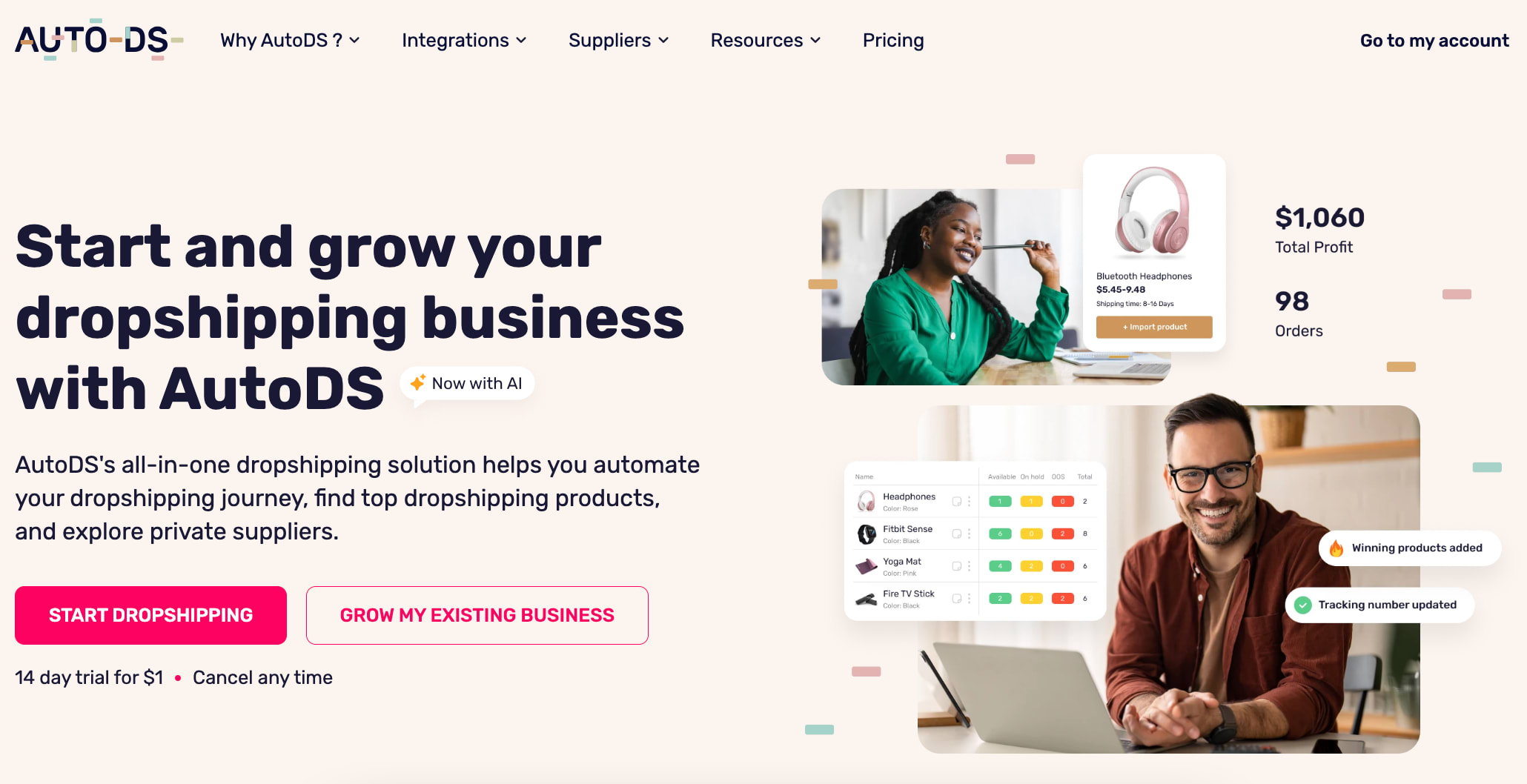
AutoDS
Now that your store is set up, let’s talk about taking things to the next level with automation tools. Connecting your store to an automation tool can save you time and effort by streamlining various aspects of your business, from inventory management to customer communication. It’s all about working smarter, not harder.
One of the top options for dropshipping automation is AutoDS, which offers a range of powerful features that help simplify and optimize your store's operations:
Price Optimization: Automatically adjusts prices based on market trends, competition, or desired profit margins, helping you stay competitive without constantly monitoring prices.
Fulfilled By AutoDS: Takes care of order fulfillment on your behalf, ensuring your customers receive their orders quickly while you focus on growing your business.
Product Importer: Allows you to easily import products from various suppliers into your store with just a few clicks, saving you time on manual data entry.
Price/Stock Monitoring: Continuously checks supplier prices and stock levels, updating your store accordingly to prevent overselling or underpricing issues.
Inventory Management: Keeps your product listings up to date and helps you track your inventory seamlessly, making it easy to know which items are in stock or need restocking.
Print On Demand: Integrates with print on demand services, allowing you to offer customized products like t-shirts or mugs without needing to hold inventory.
Automation isn’t just about one tool; plenty of options exist to help with different aspects of your business. We highly recommend using a combination of tools to achieve various goals. Explore other platforms supporting tasks like SEO, social media management, or customer service. Using multiple tools, you can streamline your operations and maximize your store's potential.
Import Products To Your Store
With AutoDS’ automation tool, it’s time to import products to your store. This step is where all the research pays off. Depending on your tool, you can easily import selected products from your suppliers directly into your store with just a few clicks.
Here’s an example of how you can do it with AutoDS’ single products importer:
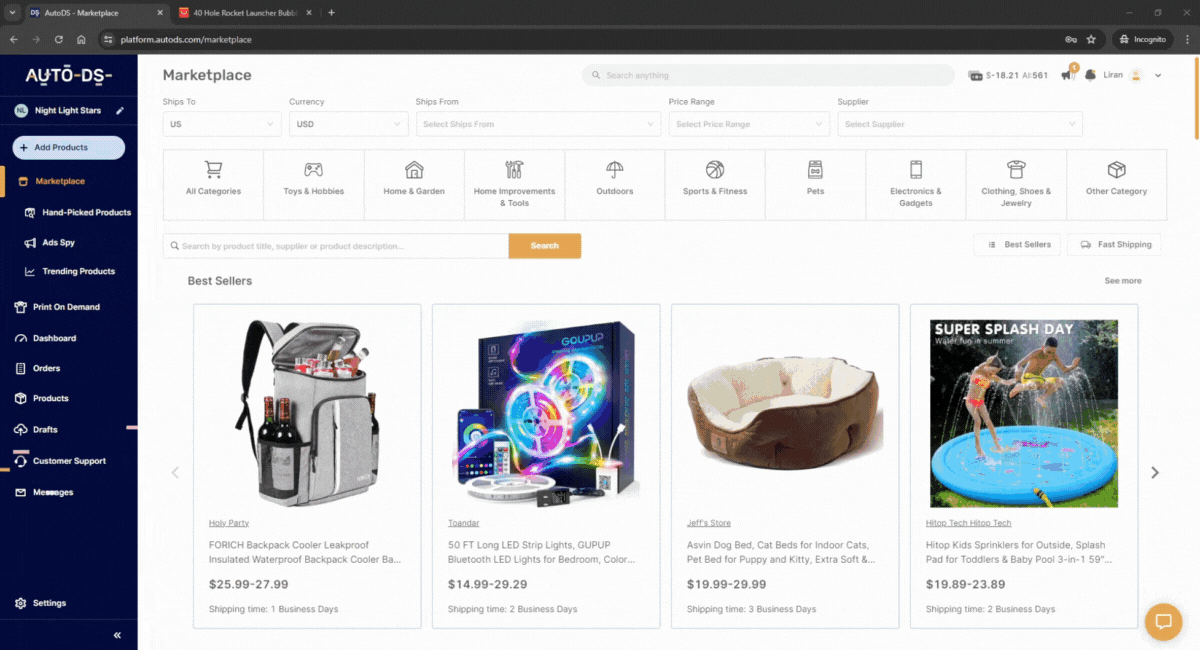
AutoDS
Remember, automation tools can make this process incredibly simple. They allow you to import multiple products simultaneously while ensuring that all necessary details—like product descriptions, images, and prices—are accurate. You can quickly fill your store with the chosen items ready for customers to discover and purchase.
Market Your Products

Shutterstock
Once your store has its products ready, it’s time to let the world know about it. Knowing how to start dropshipping includes mastering marketing, which is crucial for attracting customers and driving sales. The key is identifying where your target audience spends their time online and tailoring your marketing strategies accordingly. Here are some effective methods to get started:
Social Media Advertising: Platforms like Facebook, Instagram, and TikTok offer powerful advertising tools that allow you to reach a specific audience. Create eye-catching ads that showcase your products in action. Use engaging visuals and compelling captions to grab attention and direct users to your store. Consider short video ads to reach an even wider audience!
Email Campaigns: Building an email list is a fantastic way to keep in touch with your customers. Send newsletters featuring promotions, new arrivals, and exclusive discounts. Personalized emails can also make customers feel valued and encourage repeat purchases.
Influencer Collaborations: Partnering with influencers in your niche can significantly boost your brand visibility. Influencers have dedicated followers who trust their recommendations. Reach out to relevant influencers and propose collaborations, such as product reviews or giveaways, to get your products in front of a larger audience.
Search Engine Optimization (SEO): Optimize your store for search engines to increase organic traffic. Research relevant keywords and incorporate them into your product titles, descriptions, and blog posts. A well-optimized store can rank higher in search results, making it easier for potential customers to find you.
Content Marketing: Create valuable content that resonates with your audience. It could include blog posts, videos, or tutorials related to your products. For example, if you sell fitness gear, consider writing articles about workout tips or creating how-to videos. Content helps establish your brand as an authority and drives traffic to your store.
Fulfill The Orders Promptly
When customers place orders, fulfilling them quickly is essential for keeping them satisfied and building a strong reputation as a reliable seller. Prompt order fulfillment shows that you value your customers' time and can help foster trust in your brand. No one likes waiting too long for their purchases, so it's crucial to have a streamlined process in place.
Utilizing the automation tool we mentioned before can significantly simplify the fulfillment process. These tools can help you keep track of orders, manage shipping logistics, and stay connected with suppliers to ensure everything runs smoothly.
Also, remember you can work with store management services for easier operations.
Always prioritize keeping customers informed about their order status, as transparency plays a key role in creating a positive shopping experience.
Provide Excellent Customer Service
Finally, providing excellent customer service is the cherry on top of a dropshipping journey. Good customer service can set you apart from the competition and lead to loyal customers who return to your store again and again. Be responsive to customer inquiries, address any issues, and always be willing to go the extra mile.
Remember, personal touch matters. Take the time to connect with your customers and show them that you value their business. Happy customers are likelier to leave positive reviews and refer your store to their friends, helping your business grow even further.
5 Dropshipping Tips For Beginners
Starting a dropshipping business can be exciting, but you must equip yourself with the right strategies for success. Here are five tips to help you navigate the world of dropshipping and set yourself up for a thriving business.
Avoid These Products
Not all products are created equal in the dropshipping world, and some can cause more trouble than they’re worth. To help you avoid potential issues, here’s a list of products you should steer clear of:
Overly Saturated Products: Items like phone cases, fidget spinners, and generic fitness bands are often oversaturated in the market. With too much competition, standing out and maintaining healthy profit margins can be challenging.
Low Profit Margin Products: Avoid items with minimal markups, such as low-cost electronics accessories or basic stationery. These products may not cover shipping costs and fees, leaving you with little to no profit.
Fragile Items: Products like glassware, ceramics, and delicate electronics can easily break during shipping, leading to dissatisfied customers and costly returns.
Controversial Products: Avoid items related to politics, religion, or other sensitive topics that could spark backlash.
Copyrighted or Trademarked Items: Selling branded products like Disney characters or sports team merchandise without proper licensing can lead to legal trouble and damage your business reputation.
Heavy or Bulky Items: Large items like furniture or gym equipment can incur high shipping costs and complications, making them less suitable for dropshipping.
Health and Safety Products: Items like medical devices often have strict regulations and liability concerns. Selling them can expose you to legal risks if the products are unsafe or ineffective.
Instead, focus on high-demand products that are lightweight, easy to ship, and resonate with your target audience. Doing thorough research on trending products will help you find items with better sales potential while avoiding these common pitfalls.
Use Different Tools To Run Your Business
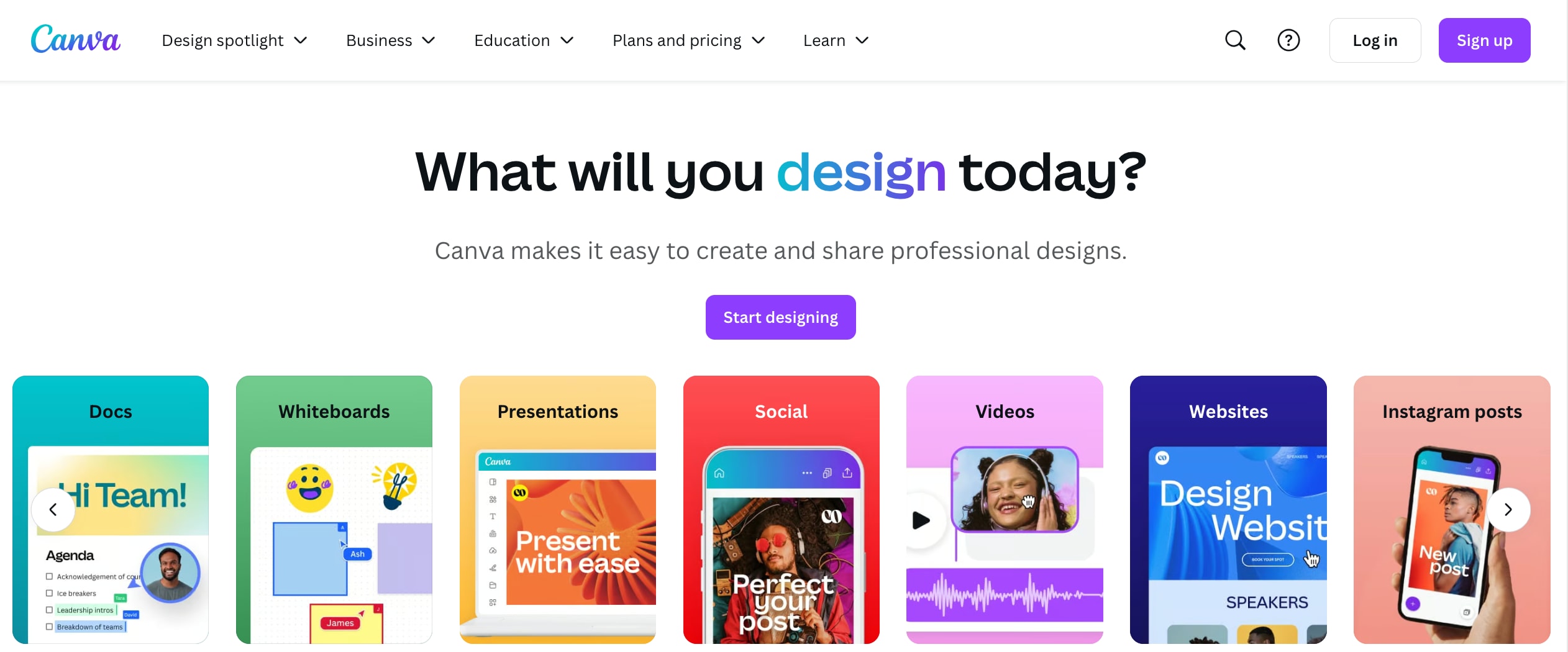
Canva
Using the right tools can significantly affect how smoothly your dropshipping business operates. Consider using:
Spy Tools: These can help you analyze your competitors and discover what products are performing well in the market. They can give you valuable insights into what to sell and how to price your items effectively.
AI Store Builders: Platforms like AutoDS' AI Store Builder simplify creating a professional online store. These tools come with customizable templates, making it easy to showcase your products beautifully.
Online Design Programs: Use tools like Canva for graphic design to create eye-catching marketing materials. Whether it’s social media posts or product images, having visually appealing designs can attract more customers.
Email Marketing Tools: Services like Mailchimp are great for managing your email campaigns. They help you keep in touch with your customers, promote your products, and announce special offers.
Hire A Freelancer
As a beginner, you might feel overwhelmed with all the tasks of running a dropshipping business. Hiring a freelancer can help you focus on the big picture while they take care of specific tasks. Whether it's product research, graphic design, or even social media management, Fiverr offers a pool of skilled freelancers ready to assist you.
Analyze Your Competition
Keeping an eye on your competitors is essential in the dropshipping game. Regularly check their websites, social media, and marketing strategies. Look for what they’re doing well and identify areas where you can stand out. Understanding your competition can help refine your offerings and pricing, leading to better sales.
Be Aware Of Tax Obligations
As you start making sales, it’s crucial to understand your tax obligations. Research the sales tax requirements in your state or country, as they can vary significantly. Keeping accurate records of your income and expenses will make tax season much more accessible and help you avoid legal issues.
Pro Tip: If handling taxes feels overwhelming, consider hiring a professional accountant or tax advisor! They can help ensure your business stays compliant and maximize potential tax deductions.
Frequently Asked Questions
How can a beginner start dropshipping?
To start dropshipping as a beginner, choose a niche that interests you and has market demand. Next, create an online store using platforms like Shopify or WooCommerce. Then, find reliable suppliers who can fulfill your orders. Once your store is ready, import and market products to attract customers. Finally, monitor your sales and optimize your store as needed.
How much does it cost to start a dropshipping business?
Starting a dropshipping business can cost anywhere from a few hundred to a few thousand dollars, depending on various factors. Essential expenses include setting up your online store, purchasing a domain name, marketing, and subscription fees for tools or platforms. While it's possible to start with a limited budget, investing in marketing and tools can help boost your chances of success.
How profitable is a dropshipping business?
The profitability of a dropshipping business varies widely based on factors such as niche selection, pricing strategy, and marketing efforts. Many dropshippers aim for profit margins of around 15% to 45% per sale, but success depends on how effectively you market your products and manage costs. With the right approach, dropshipping can be a lucrative venture.
How do I find dropshipping suppliers?
You can start by researching online directories or exploring platforms specializing in dropshipping, which often provide a list of vetted suppliers. You can also connect with manufacturers directly to inquire about dropshipping options. Be sure to assess their reputation, shipping times, and product quality before deciding.
Conclusion
In conclusion, dropshipping presents an exciting opportunity for those looking to start their own online business without the burden of inventory. Learning how to start dropshipping is an attractive option, offering low startup costs and the flexibility to operate from anywhere.
However, success in dropshipping comes with its challenges. We can confidently navigate the industry's complexities by embracing automation tools, analyzing competitors, working with professionals, and staying informed. Ready to launch your dropshipping business? Find expert freelancers on Fiverr to help with everything from store setup to marketing.

